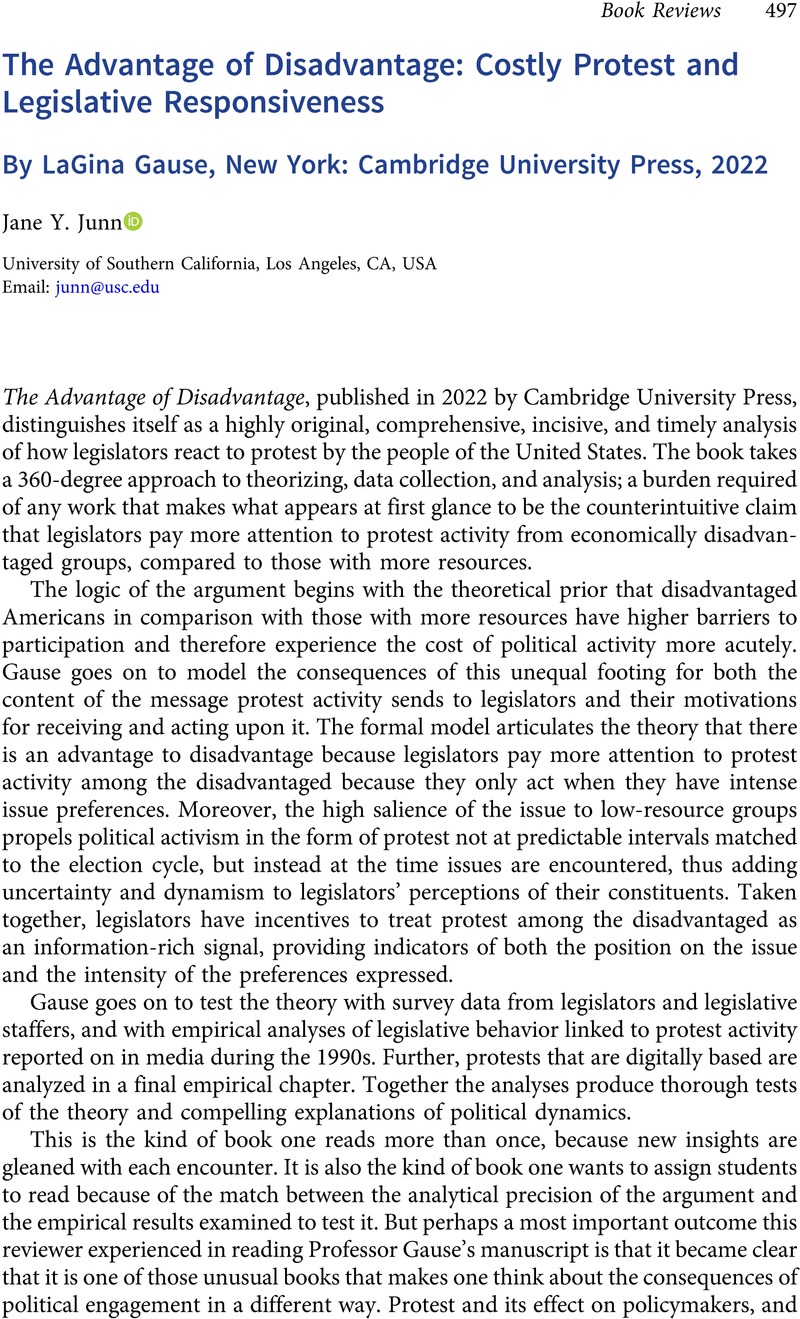No CrossRef data available.
Article contents
The Advantage of Disadvantage: Costly Protest and Legislative Responsiveness By LaGina Gause, New York: Cambridge University Press, 2022
Review products
The Advantage of Disadvantage: Costly Protest and Legislative Responsiveness By LaGina Gause, New York: Cambridge University Press, 2022
Published online by Cambridge University Press: 11 October 2023
Abstract
An abstract is not available for this content so a preview has been provided. Please use the Get access link above for information on how to access this content.

- Type
- Book Review
- Information
- Copyright
- © The Author(s), 2023. Published by Cambridge University Press on behalf of The Race, Ethnicity, and Politics Section of the American Political Science Association


